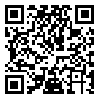Volume 7 -
pbp 2025, 7 - : 0-0 |
Back to browse issues page
Download citation:
BibTeX | RIS | EndNote | Medlars | ProCite | Reference Manager | RefWorks
Send citation to:



BibTeX | RIS | EndNote | Medlars | ProCite | Reference Manager | RefWorks
Send citation to:
Muhammad S, Abubakar F. Antifungal Activity of Mitracarpus hirtus Leaf Extract against Dermatophytes Isolated from Ringworm Patients. pbp 2025; 7 (In press)
URL: http://pbp.medilam.ac.ir/article-1-323-en.html
URL: http://pbp.medilam.ac.ir/article-1-323-en.html
1- Department of Microbiology, Kebbi State University of Science and Technology Aliero, Nigeria
2- Department of Microbiology, Kebbi State University of Science and Technology Aliero, Nigeria. ,farida.abubakar@ksusta.edu.ng
2- Department of Microbiology, Kebbi State University of Science and Technology Aliero, Nigeria. ,
Abstract: (217 Views)
The increasing prevalence of dermatophytic infections and the growing resistance to conventional antifungal drugs necessitate the exploration of alternative therapies, particularly from medicinal plants. Mitracarpus hirtus, traditionally used in Nigeria for treating skin infections, was investigated for its antifungal activity against dermatophytes isolated from patients with ringworm. Aqueous extracts of M. hirtus leaves were prepared and screened for phytochemical constituents. Clinical samples were collected from patients in Birnin Kebbi, and dermatophyte species were isolated and identified. The antifungal activity was assessed using the agar well diffusion method. Phytochemical screening of the aqueous leaf extract of Mitracarpus hirtus revealed the presence of several bioactive compounds, including alkaloids, tannins, flavonoids, steroids, and cyanogenic glycosides, all known for their antimicrobial properties. Glycosides and volatile oils were not detected. Clinical samples collected from ringworm-infected patients, yielded a total of 34 dermatophyte isolates. The identified species included Trichophyton mentagrophyte (29.4%), T. rubrum (14.7%), T. beigelii (20.6%), Microsporum canis (17.6%), and Epidermophyton floccosum (17.6%). T. mentagrophyte was the most prevalent isolate. Results showed a concentration-dependent antifungal effect. The extract exhibited inhibition zones ranging from 12 mm at 20 mg/mL to 26 mm at 100 mg/mL. The strongest inhibition (26 mm) was observed against T. rubrum and M. canis at the highest concentration tested. E. floccosum was the least susceptible isolate, showing a maximum inhibition of 21 mm. These findings validate the ethno medicinal use of M. hirtus and highlight its potential for development into plant-based antifungal formulations. Further studies are recommended to isolate active compounds, elucidate mechanisms of action, and evaluate clinical efficacy.


Keywords: Mitracarpus hirtus, Antifungal activity, Dermatophytes, Phytochemical screening, Ringworm infections
Type of Study: Research |
Subject:
Herbal Drugs
Received: 2025/07/11 | Accepted: 2025/12/1 | Published: 2025/12/1
Received: 2025/07/11 | Accepted: 2025/12/1 | Published: 2025/12/1
Send email to the article author
| Rights and permissions | |
 |
This work is licensed under a Creative Commons Attribution-NonCommercial 4.0 International License. |




